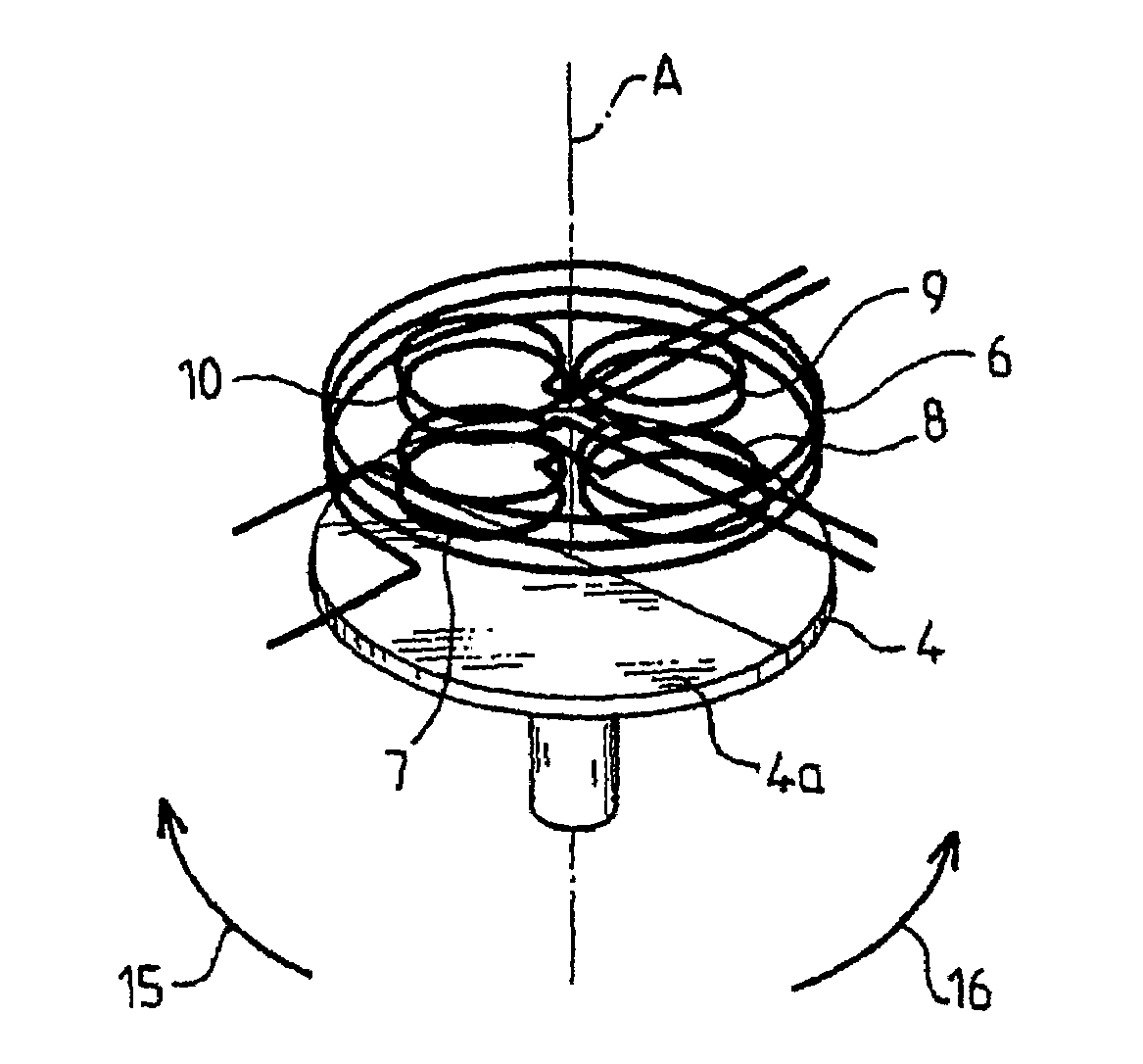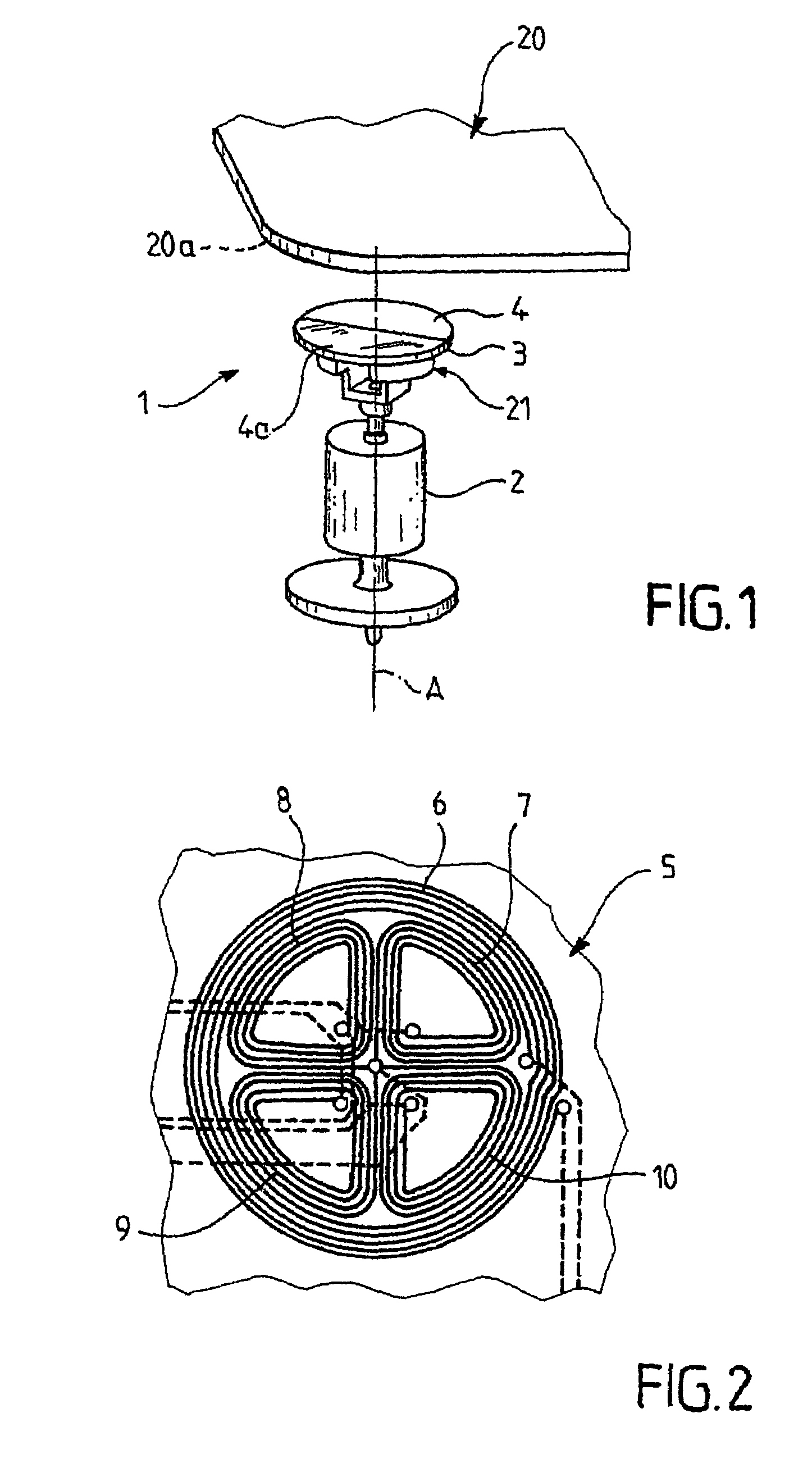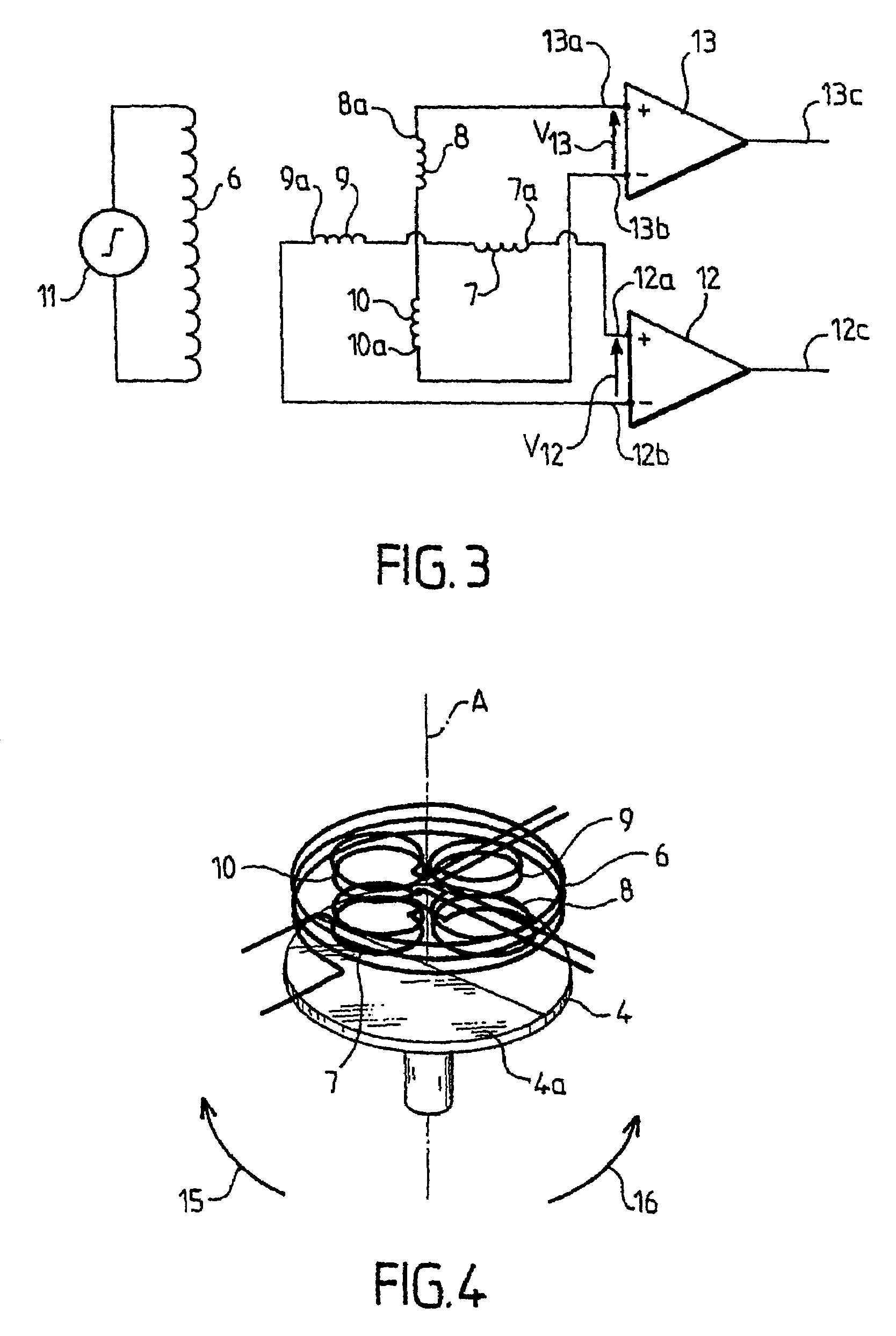Inductive angular-position sensor
- Summary
- Abstract
- Description
- Claims
- Application Information
AI Technical Summary
Benefits of technology
Problems solved by technology
Method used
Image
Examples
Embodiment Construction
[0024]With reference to FIG. 1, a rotating moving body 2 is shown that is driven in rotation along its axis of revolution A, for example by the flow of a fluid (not shown). An inductive angular-position sensor 1 comprises a stator 20 and a rotor 21. The stator 20 and the rotor 21 can be moved angularly relative to one another along axis A. It will be noted that the use of the term stator does not imply that the stator 20 has a fixed orientation.
[0025]The rotor 21 comprises a rotating disk 3. The rotating disk 3 is arranged on the rotating moving body 2, such that the rotating disk 3 is integral in rotation along axis A of the rotating moving body 2. The flat surface 4 of the disk 3 that is opposite to the rotating moving body 2 is partially metallized. For example, a half-disk 4a is metallized.
[0026]The stator 20 comprises a printed circuit 5 (FIG. 2). The printed circuit 5 is arranged at the right and close to the disk 3, essentially parallel to the surface 4.
[0027]With reference t...
PUM
 Login to View More
Login to View More Abstract
Description
Claims
Application Information
 Login to View More
Login to View More - R&D
- Intellectual Property
- Life Sciences
- Materials
- Tech Scout
- Unparalleled Data Quality
- Higher Quality Content
- 60% Fewer Hallucinations
Browse by: Latest US Patents, China's latest patents, Technical Efficacy Thesaurus, Application Domain, Technology Topic, Popular Technical Reports.
© 2025 PatSnap. All rights reserved.Legal|Privacy policy|Modern Slavery Act Transparency Statement|Sitemap|About US| Contact US: help@patsnap.com



